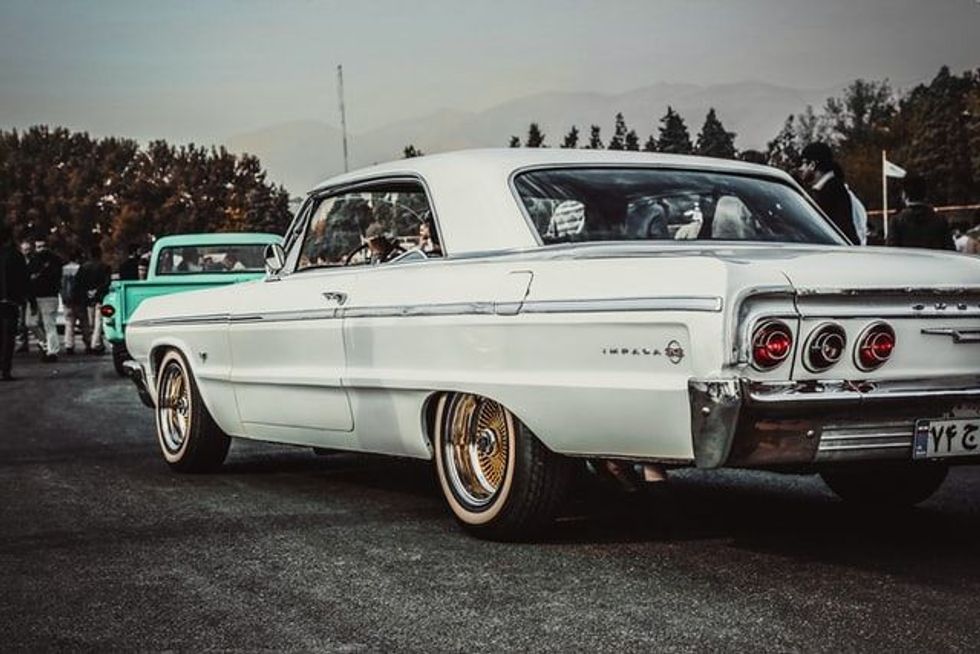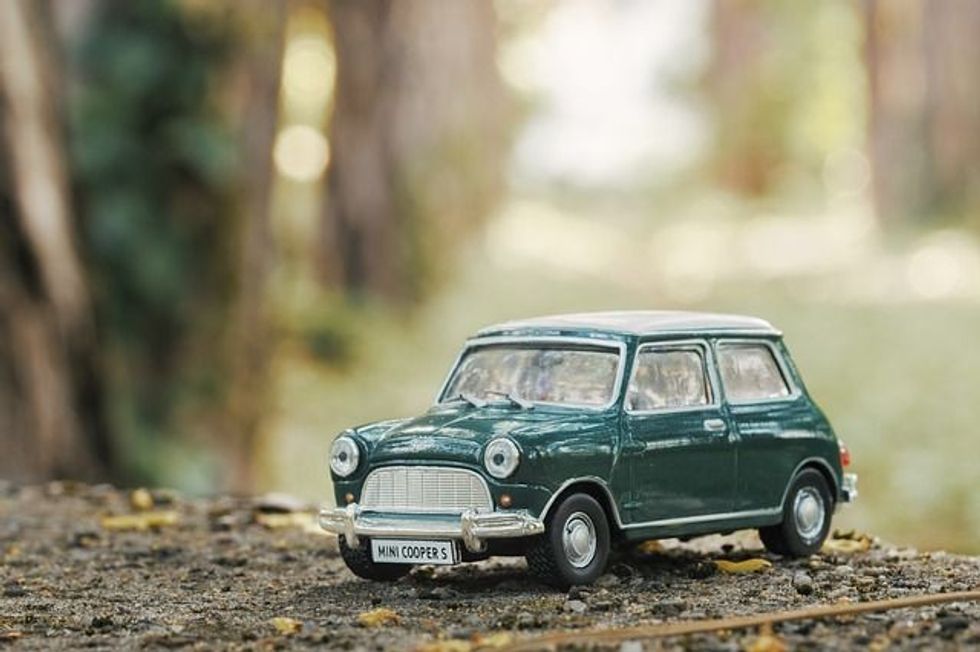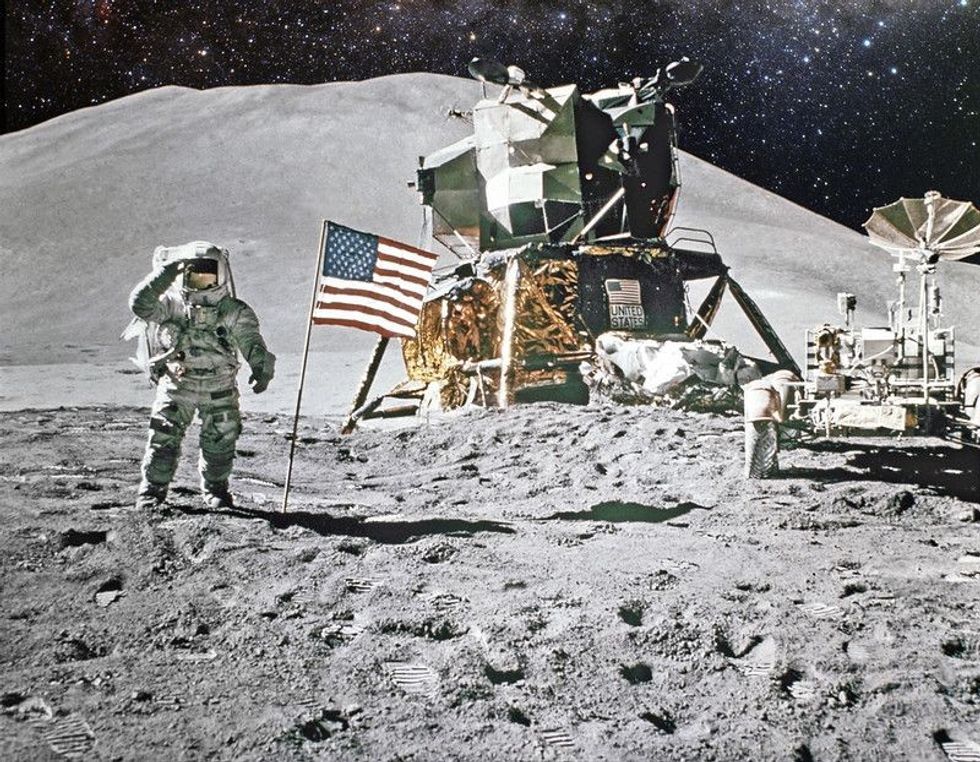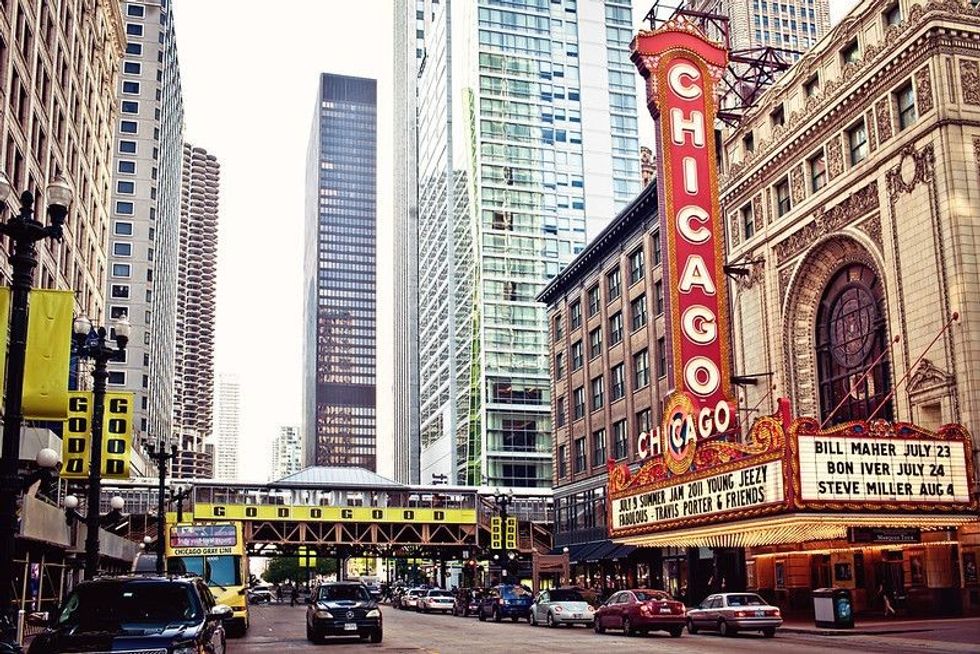19 Interesting '60s Cars Facts For Kids: All About Classic Muscle Cars

These '60s cars facts are all about how the automobile industry evolved during the '60s.
The history of American cars dates back to the late 1800s when Charles Edgar Duryea and his brother Frank built their first car manufacturing company in the US. This automobile manufacturing company was named Duryea Motor Wagon Company.
A car's history dates back to the 17th century, when a Flemish member of the Jesuit mission in China, Ferdinand Verbiest, built the first steam-powered vehicle to carry a driver or a passenger. However, there are no authentic sources that reveal the success of this invention.
A full-scale, self-propelled, fully functional steam-powered tricycle was built by Nicholas Cugnot in about 1769, but this invention was fragile as it faced issues with the availability of water and maintaining the pressure of steam.
While the world was changing, the thirst to find a transportation solution was yet to be quenched.
Perhaps, many inventions could have gone unnoticed and undocumented. While steam as a fuel showed significant challenges for the supply of water and maintaining pressure, gasoline became an alternative solution.
The first internal combustion engine dates back to 1807 when Joseph Nicéphore Niépce and his brother Claude developed their Pyréolophore, installed on a boat in France. A mixture of Lycopodium powder (from the Lycopodium plant), fine coal dust, resin, and more formed the fuel for Pyréolophore. Later inventions included fuels mixed with hydrogen and oxygen.
However, a hope to develop a successful carriage that ran on gasoline came in 1879, when Carl Benz showed how a two-stroke, single-cylinder engine can propel a vehicle. The successful demonstration raised the hopes that a lightweight car with an engine and chassis could be fitted as a single unit.
The first American car came into existence only around 1902-1903, when Ford Motor Company manufactured its Model T. In a relentless pursuit to build a self-propelled vehicle, that could carry up to eight people and make transportation fun, today we have a world of cars that have evolved over decades and centuries.
The fascination with building driverless cars, and electric cars indicates how the automobile industry is changing for good.
Muscle Car Facts
The growth of the automobiles sector dates back to the post-World War era when the American manufacturing industry shifted its focus from war-related products to consumer segment goods. By the late '50s, one-sixth of working Americans were associated with the automobile industry either directly or indirectly.
Thereby, the United States became the largest manufacturer of consumer cars, realizing the goal of Henry Ford.
The American automobile industry saw a major shift in the '60s. The Austin Martin, Mini Cooper, Pontiac Tempest, Rambler Rebel, and many more economic, compact, pony, muscle, and sports cars were introduced onto the market.
You may be wondering what a muscle car is? Does it have huge muscles? If so, how does it look?
A muscle car is a powerful, high-performance vehicle that seats a powerful V-8 engine in the core. It's usually a small to mid-sized two-door car and is a rear-wheel-drive car.
Though American muscle cars became popular as '60s classic cars, their automotive history dates back to the late '40s. Installed in a Rocket 88, Oldsmobile decided to showcase a V-8 engine in one of the first cars classified as a muscle car which was designed with a less powerful six-cylinder engine.
Rambler Rebel arrived in 1957, a V8-powered vehicle, that found notable success.
However, the craze for the best muscle cars accelerated further when, in 1964, Pontiac GTO was released to the market. At the behest of the younger generation, demanding more powerful cars, several muscle cars were manufactured and launched in the market.
Chevrolet Camaro and Dodge Charger were released around this time. The design and make of these muscle cars focused on speed, performance, and affordability. Some of these old cars would come with a four-speed manual transmission.
The Most Popular Cars In The '60s
The '60s saw significant events happening in the US. The Vietnam War, the Civil Rights Movement, the assassination of John F Kennedy, and the big, audacious goal of landing a man on the moon. While the world was talking about these changes, a silent revolution happened in the automobile industry.
Chevrolet from General Motors, Ford's iconic model cars, including Thunderbird, Falcon, Chrysler, Pontiac Tempest, Buick Special, Renault Dephaine, Austin Martin Mini Cooper, were popular in the '60s.
Improved infrastructure like drive-in restaurants and malls increased the demand for family travel. A family's median income was about $5,620, which rose from $3,319 in the year 1950.
Quite a few American households could afford at least one vehicle in the '60s. An average car in the '60s cost about $2,752, and a gallon of gas cost about 0.31 cents. Thus, the demand for speed, safety, and seat belts increased.
General Motors (Chevy) introduced three new cars in the US as 1961 models. These small cars included the Buick Special, Pontiac Tempest, and Oldsmobile F-85. The Chevy Camaro from Chevrolet (G.M.)
was first put up for sale in 1966. This classic car from General Motors was classified as a pony car. Chevy Camaro was launched as a competing model to Ford Mustang.
Ford Thunderbird, fondly known as T-Bird, is considered one of the earliest classic muscle cars released in 1955. It was one of the classic cars of the '60s marketed as a personal luxury car with a two-seat coupe and convertible.
This Ford Model was redesigned in 1958 to include a second row with two bucket seats. The Ford model cars evolved to become more affordable for a blue-collar employee segment.
Hence, Ford Mustang was launched in 1964 and was more affordable than a T-bird. The success of the Ford Mustang attracted American manufacturers to focus on producing more muscle cars.
An average car, in 1966, cost over $3,000. However, sports cars were way more expensive than other classic cars of the era. Some popular cars of the '60s included Ford Mustang (1964), Chevy Camaro (1966), and Plymouth Road Runner (1968).
With the acceptance of new model cars, foreign car manufacturers found a niche market in '50s America. Volkswagen, Mercedes Benz, Toyota, Fiat, and Datsun entered the American market with smaller cars and cheaper options.
The demand for cheaper cars attracted the attention of American manufacturers to produce affordable native automobiles for Americans to compete with these foreign brigades of cars.
German car manufacturer, Volkswagen, was one of the first foreign entrants into the American automobile market. It exhibited and sold its first car in the US in 1949.
Later, in April 1955, Volkswagen of America was established to take care of sales and service for Volkswagen, by then popular as 'Victory Wagon'.
One million Type 1 Volkswagen Beetle units were produced in 1955 in the U.S. With the introduction of four new models (Karmann Ghia, Notchback, Fastback, and Squareback) based on the new Type 3 mechanical underpinnings, Volkswagen expanded its product line.
In 1969, it introduced a larger Type 4 version, which was very different from its previous versions. Their unibody construction, with the options of electronic fuel injection, fully automatic transmission, and a stronger powerplant, were introduced with Type 4 models (411 and 412).
British Motor Corporation launched The Mini in 1959. It influenced the next generation of car manufacturers.
This British sports car came into existence due to the Suez Canal's fuel crisis. With a space-saving design with front-wheel drive and a perfectly fitted traverse engine, The Mini allowed more space for passengers, luggage, and a small car design. It was the most sought-after car because of its space, design, and affordability.
In 1959, a Mini would have cost $1,340 and was the cheapest car sold. Its sports versions, Mini Cooper and Mini Cooper S, gained prominence as race and rally cars after winning the famous Monte Carlo Rally in 1964, 1965, and 1967.
Another British car manufactured for the North American Market came from Jaguar Cars Ltd. They launched the Jaguar E Type. It was actively recognized for its beauty, top speed performance, and competitive pricing. Thus establishing the Jaguar E type model as an icon of the motoring world.
A notable European entrant was BMW, a German car manufacturer during this era. BMW announced its first New Class Generation car in 1961. The BMW 1500 was launched in 1963 and had a record top speed of 92 mph (148 kph).
Soichiro Honda, the founder of Honda, had extensive knowledge of motorcycles, and he applied it to making '60s foreign cars. Thus, Japanese cars manufacturer Honda started working on prototypes for road cars in the early '60s.
The first production car by Honda was the 1963 T360, mostly intended for the Japanese market, and was a tiny pickup truck. With a 360 cc, 30 hp engine, this truck featured four different body styles, including a traditional truck bed and a panel van.
A few months later, Honda launched its first production car, the S500. This Japanese car was designed with chain-driven rear wheels and fitted with a four-speed transmission.
Do you wonder how a muscle car is different from a sports car? This question pops up when you start reading about different types of cars. Many of us are often confused when we classify a car as a muscle or sports car.
A muscle car focuses on going fast on a straight road or a drag racing track. Classic cars classified as muscle cars include Plymouth Barracuda, AMC AMX, Dodge Challenger, Chevrolet Chevelle SS, Pontiac GTO, and Oldsmobile 442.
A sports car focuses on handling the twists on a track and speed and performance. Legendary brands like Bugatti, Maserati, Alfa Romeo, MG, Morgan, and Mercedes-Benz launched early sports cars.
The First American sports car came from GM, which unveiled its Chevrolet Corvette in January 1953. As a tribute to America's sports cars, National Corvette Museum was opened in 1994 with a vision to celebrate the invention. It's located in Bowling Green, Kentucky, just a few miles away from the GM Bowling Assembly Point, where every Corvette is assembled.

What were cars made of in the '60s?
In the '60s, Americans demanded small and compact cars. Thus, the automobile industry of the '60s induced significant changes in the production of cars.
Considering the heavy demand for high-speed and high-performance cars, the design and body aesthetics needed to change. Hence in some models, aluminum replaced iron and steel in a car's external body.
The focus was on the economy of use, hence, engineering improvements were prioritized accordingly. Considering fuel economy, manufacturers adjusted the combustion chamber design and compression ratios. With the launch of the first rear-engine car made in America, the Chevy Corvair, it was evident that mechanical advances were on display.
Increased production and automobile innovation offered 266 different options to choose from for American car buyers. Americans had many choices, with a Rambler American sedan priced at $1,795 for a limited-edition Cadillac Eldorado Brougham tagged at $13,075.
Tiltable steering wheels, heating, and air conditioning systems fascinated the car buyers of this decade. However, increasing road accidents forced the Detroit Manufacturers to look at safety as a primary area of concern.
The car manufacturers were required to follow standard procedures.
Auto manufacturers had to notify car buyers of any safety defects. Collapsible steering columns, dual brakes, uniform gearshift pattern, new safety regulations and standards for tires and rims, signals visible from the side, installation anchorages for shoulder belts, seats, and safety door latches and hinges were some of the measures that were taken.
American car buyers had around 364 body styles by the end of the decade. Oldsmobile released one of the first front-wheel-drive cars in 1937. It came as a surprise for many, as pulling a car by front wheels was a rare feat.
The Cheapest Car In 1960
Though the affordability of cars was the focus in the initial years of the '60s, demand for much safer cars, imposed restrictions by the government, higher wages, and increased production costs led to increased prices. However, let's find out more about the cheapest cars in the '60s.
American Motors Corporation's Rambler American compact car was most often the lowest priced car built in the US. Released in two versions; the Deluxe version was priced at $1,789 and a Super trim version that was tagged at $1,874 in 1958-59.
Ford Falcon launched its basic sedan version in the '60s and was price-tagged at $1,974. A competing model Chevrolet Corvair 1960, was released and priced quite low.
However, the cheapest car recorded in American automobile retail sales was Austin Martin's Mini. It is the cheapest car of the '60s, priced at $1,340. Mini was more affordable to American families with spacious and compact car designs.
Renault Dauphine was another foreign car that was low-priced in 1958. Though this French car manufacturer saw initial success, it met more criticism for its abysmal corrosion record. In 1962, Renault launched its redesigned and up-market version of Renault Dauphine as Renault 8.
Rambler, priced at $1,789 in the early '60s, ended up costing over $2,000 by 1966.
We Want Your Photos!
More for You
Bachelor of Arts specializing in English Literature

Akinwalere OlaleyeBachelor of Arts specializing in English Literature
As a highly motivated, detail-oriented, and energetic individual, Olaleye's expertise lies in administrative and management operations. With extensive knowledge as an Editor and Communications Analyst, Olaleye excels in editing, writing, and media relations. Her commitment to upholding professional ethics and driving organizational growth sets her apart. She has a bachelor's degree in English Literature from the University of Benin, Edo State.
Disclaimer
1) Kidadl is independent and to make our service free to you the reader we are supported by advertising. We hope you love our recommendations for products and services! What we suggest is selected independently by the Kidadl team. If you purchase using the Buy Now button we may earn a small commission. This does not influence our choices. Prices are correct and items are available at the time the article was published but we cannot guarantee that on the time of reading. Please note that Kidadl is a participant in the Amazon Services LLC Associates Program, an affiliate advertising program designed to provide a means for sites to earn advertising fees by advertising and linking to Amazon. We also link to other websites, but are not responsible for their content.
2) At Kidadl, we strive to recommend the very best activities and events. We will always aim to give you accurate information at the date of publication - however, information does change, so it’s important you do your own research, double-check and make the decision that is right for your family. We recognise that not all activities and ideas are appropriate for all children and families or in all circumstances. Our recommended activities are based on age but these are a guide. We recommend that these ideas are used as inspiration, that ideas are undertaken with appropriate adult supervision, and that each adult uses their own discretion and knowledge of their children to consider the safety and suitability. Kidadl cannot accept liability for the execution of these ideas, and parental supervision is advised at all times, as safety is paramount. Anyone using the information provided by Kidadl does so at their own risk and we can not accept liability if things go wrong.
3) Because we are an educational resource, we have quotes and facts about a range of historical and modern figures. We do not endorse the actions of or rhetoric of all the people included in these collections, but we think they are important for growing minds to learn about under the guidance of parents or guardians.







